Do I Need to Leave Bleed Space When I Upload to Creatspace
How To Ready Your Ingram Spark PDF – With Free PDF Fix Download
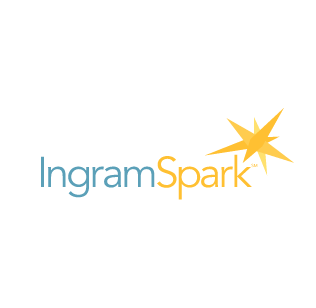 For many reasons, some authors decide to forgo the about popular path of publishing with Amazon'southward Createspace and utilize the pop service at Ingram Spark/Lightning Source. However, guidelines given exercise not fully prepare an author for troubleshooting, and state that each time an writer has to re-upload the file because information technology's not correct, they will be charged $25. Then it'south really important to become this right first time.
For many reasons, some authors decide to forgo the about popular path of publishing with Amazon'southward Createspace and utilize the pop service at Ingram Spark/Lightning Source. However, guidelines given exercise not fully prepare an author for troubleshooting, and state that each time an writer has to re-upload the file because information technology's not correct, they will be charged $25. Then it'south really important to become this right first time.
Update 2020 – LS/IS provide a full guide to preparing your PDF here.
There is in fact zero wrong with the style that Ingram Spark needs you to present your file. The trouble is that y'all need to learn the professional way of presenting a PDF, and that's why many people have bemoaned the procedure. That'due south why when you cull to use this service, you need to be aware it'due south going to require a steep learning curve, and you lot may want to hire a professional instead to format your interior.
The principal thing to remember is that Ingram Spark is completely automated. There is no human checking your upload. This ways one mistake, and yous'll be rejected.
Update 2020: LS/IS accept provided this handy guide for creating a PDF from Word.
And in instance you really just want a quick fix, you lot tin can get a free download of a Preflight Preset for Adobe Acrobat XI – DC at the finish of this post, where I have created an autofix to analyze, fix, and save your PDF with all of these issues (except margins and bleeds) done with a click of the mouse.
So here'south what's going on:
Why PDFs?
Since the time I trained as a digital designer in the late 90s, PDFs have been used for by and large every sort of printable. Concrete ink on physical paper ways understanding ink pigments, densities, and typesetting. Equally the digital historic period has marched on, we all the same accept to consider these issues for the hardcopy version of our book, and as well for some concerns in e-book publishing besides.
How Do I Set up My PDF to Ingram/Lightning Source Standards?
There are some bones requirements set up out in the File Creation Guide that unremarkably get PDFs rejected if they are not followed:
- Must exist PDF/X 2001 or 2003
- Must utilize the SWOP coated profile
- Must be Grayscale colour manner for interiors, CMYK for covers
- Must be 300 dpi for images and 106 lpi for text
- Should plough off ICC Color Profiles
- Must be set up to 240% TAC/TIC
- All fonts must be embedded (Under 14pt size will not embed if you use Standard settings in your PDF)
- Margins must be set up to Ingram specifications
1. What is a PDF?
A PDF is a Portable Certificate Format. The purpose of a PDF is to create a "flight" package. Imagine you are putting everything into a suitcase and flying it in a airplane over to the printer, as a portable way of carrying all the fonts, colors, images, and content in one get. This is a patent backed by ISO, the International Arrangement for Standardization, an independent, not-governmental system, who provide common standards internationally. This means PDFs are internationally recognized and standardized for apply globally.
What is a PDF/X?
At that place are various subsets of standards for PDFs, all given diverse letter names. The one that authors should be bothered with come under PDF/X as described past ISO:
"PDF/X (since 2001 – series of ISO 15929 and ISO 15930 standards) – a.k.a. "PDF for Exchange" – for the Graphic engineering – Prepress digital data substitution – (working in ISO Technical commission 130), based on PDF one.3, PDF 1.4 and later on also PDF i.six."
You demand to employ the oldest type of PDF setting with Ingram, which ways your document can be read by even the oldest PDF readers, that is, the standards from 2001 – 2002. So yous demand to apply PDF/X-1a:2001 or PDF/X-three:2002.
"PDF/10‑1a (2001 and 2003) (Acrobat Pro)
PDF/10‑1a requires all fonts to exist embedded, the appropriate PDF bounding boxes to be specified, and color to appear as CMYK, spot colors, or both. Compliant files must contain information describing the printing condition for which they are prepared. PDF files created with PDF/Ten‑1a compliance can be opened in Acrobat 4.0 and Acrobat Reader 4.0 and later.
PDF/X‑1a uses PDF 1.three, downsamples color and grayscale images to 300 ppi and monochrome images to 1200 ppi. Information technology embeds subsets of all fonts, creates untagged PDFs, and flattens transparency using the Loftier Resolution setting."
Notation:
The PDF/X1‑a:2003 and PDF/10‑3 (2003) presets are placed on your computer during installation. Yet, they aren't available until you lot move them from the Extras folder to the Settings folder.
2. SWOP Profile and Colour Mode Information
What is SWOP?
Luckily for u.s., PDF/Ten in Adobe has the preset profile that encompasses all of those standards called "US Spider web Coated SWOP." This is the standard CMYK profile you demand to use for Ingram, and mostly (come across beneath) everything will be set for yous.
Specifications for Web Offset Publications, abbreviated to SWOP, with the preset usually chosen "US SWOP Coated" is a set of specifications to ensure standards for consistency in printed materials in the United states of america and across, including legibility, design concerns, and constraining ink to 300% mix of Cyan, Magenta, Yellowish and Black, known as CMYK, instead of 100% of iv inks totaling 400%.
Withal, y'all need to force these limits downward manually even further for Ingram Spark, considering 300% is besides much "TAC/TIC" for Ingram papers and inks. They want NO More than THAN 240%. Run across beneath for TAC/TIC info.
Too, brand sure you don't use any spot colors, i.due east. fancy inks like gold and silver. These will mean a filibuster in your proof, and can cause your PDF to be rejected.
three. CMYK/Grayscale
What is CMYK/RGB?
RGB stands for Cherry, Green, Blue, and when mixed produces white light. This color style is but used for screen-based coloring. Do not use this for print!
CMYK stands for Cyan (light blue), Magenta (night pink), Yellow, and Fundamental (Blackness, used at a high density "true" black every bit a primal to measure all other shades against), and when mixed, produces blackness, and must be used for print-based materials, including Ingram
Dots of these colors are printed onto the folio to create varying shades of every other colour in a "moire," that is, a cluster of dots. These create your epitome or blazon on a folio. Depending on how many dots there are per foursquare inch, the quality is high or low. This is referred to equally DPI (come across below for more on DPI).
Here is a photo showing the color differences betwixt screen and print, and why you should not use RGB for impress – when converted to CMYK, colors will exist dull and dingy on impress, and then y'all must convert before printing or else this will happen:
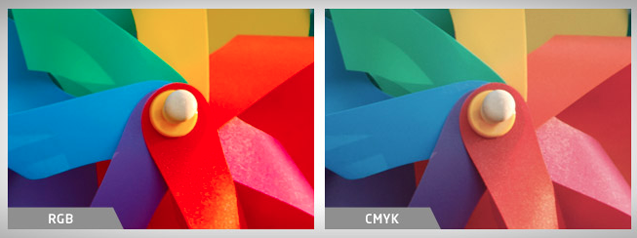
What is Grayscale?
Grayscale is black and white. Using a scale of gray, hence the name, the black ink is printed on the folio to create the image or text impress. This is the mode you need to utilise for interior files for Ingram Spark, and indeed for about PDF interiors of whatsoever book.
Covers/Color PDF Exports
Before you export your document to PDF, you have to ensure all your images are 300DPI and saved at the size they are in your certificate. This will assist them exist clear and a skillful resolution.
Y'all will also take to brand sure your color contour is set to CMYK, non RGB. If you exit your colors in RGB, it is likely the colors volition exist incorrect in the terminal print. David Blatner and Claudia McCue become into incredible particular about this over at InDesign Secrets with a handy guide.
To get-go a blueprint in CMYK do the post-obit:
Adobe Photoshop
- Go to File > New
- Set image size, then choose "CMYK Color" from the Color Manner drib-down menu. Set at least 300 pixels/inch resolution
Adobe Illustrator
- Click File > New…
- Go to "Avant-garde" at the bottom of the window
- Select CMYK in Colour Mode
If you've already designed in RGB, you tin covert using these methods:
Adobe Illustrator
- Click Edit > Assign Profile
- Choose "Profile" and in the dropdown select "U.S. Web Coated (SWOP) v2
Adobe InDesign
Adobe InDesign'southward default is CMYK. All the same, you exercise need to check that your working CMYK profile is prepare to U.S. Web Coated (SWOP) v2:
- Click Edit > Convert to Contour…
- Click "Destination Space" and choose U.South. Web Coated (SWOP) V2 in the CMYK Profile dropdown.
Adobe Photoshop
- Go to Edit > Convert to Profile…
- In "Destination Space" select "U.South. Web Coated (SWOP) v2*
*Call back: you will have to set up the % of the TAC/TIC manually.
4. DPI
What is DPI?
Dots Per Inch measures the density of ink dots on your page. For digital images, i.east. on screens only, y'all tin utilize 72DPI for computers, which is screen resolution, and 150DPI for smart devices. So you should use 150DPI for all ebook images these days to be sure.
For Ingram PDFs, you must set this to the print resolution, which is 300DPI (300 dots per inch of paper).
What is PPI?
Don't worry about this one. But hither's a definition:
"Pixels per inch (PPI) or pixels per centimeter (PPCM) is a measurement of the pixel density (resolution) of an electronic image device, such equally a computer monitor or telly display, or image digitizing device such equally a camera or epitome scanner." (Wikipedia)
What is LPI?
This only ways Lines Per Inch, and is the equivalent screen measurement. Here's a handy table for comparison:
| Printer | Screen | Resolution |
| 300 dpi | 60 lpi | 120 ppi |
5. What is ICC Color Profile?
The International Color Consortium is an association of around 60 companies that are involved in print media. According to Wikipedia, "Aside from members of the photography, press, and painting industry, new members from several unlike industries include MathWorks, Nokia, Sony Corporation, and Signazon.com."
You must turn off all ICC color profile direction when submitting a PDF to Ingram.
six. 240% TAC/TIC
This is all to practise with ink hitting paper at Ingram Spark.
What is saturation?
When y'all driblet ink onto a piece of paper, the ink saturates the newspaper at a certain rate, given how much ink you forcefulness into the paper. This tin can be done past force per unit area with the press. You need to specify this to Ingram'south standard for their calibrations of their press press, which is covered in the SWOP profile recommended, simply y'all manually accept to ready the TAC/TIC, because yous are customizing a setting that does non exist in the SWOP specific to Ingram needs.
What is paper density?
The newspaper you use might be more glossy, which requires more ink pressed into it, or more than matt and porous, with the extremes betwixt glossy photo newspaper (less porous) and tissue paper (most porous). Every bit yous know, if you tried to mop up ink with a photo, you would soak very footling. Using a tissue soaks up immediately. This means that more than porous papers require less ink for the same consequence. Ingram newspaper is able to cope with the settings in their guide. Following these settings volition mean your ink will soak into the paper at the right rate.
What is TAC/TIC?
Total Area Coverage/Total Ink Coverage has to be set to 240% for Ingram. This means that the amount of ink is being forced downwards even further than the SWOP contour. In Acrobat Pro, y'all can do this by going to Tools > Output Preview > Total Area Coverage to set the custom %. The reason this is important is that ink being put on the page in excess of 240% can cause color problems and muddying of browns and greens in particular. David Blatner at InDesign Secrets discusses this in more detail here, particularly pertaining to Ingram Spark specs.
vii. How To Embed Fonts
Embedding a font ways you are putting that font inside the suitcase of the PDF and then that when it "takes flight" the font will print as you wanted information technology to. If you don't do this, a default font will print in its place. Hither is an example (I made it up, non a real book: designed in five minutes purely for this article), with the embedded font on the left and unembedded, replaced font on the right. Every bit you lot tin see, information technology comes out really desperately when the font gets replaced:
 Cover with embedded fonts in PDF – looks great on printing |  Cover without embedded fonts – fonts replaced with default font, looks terrible |
Watch this video from Adobe on how to embed your fonts.
8. Setting Margins for Ingram PDFs
Another like shooting fish in a barrel way to go rejected is to forget to set the margin on the export of your PDF. If you don't ready the margin correctly, your book will non impress correctly inside the area specified. With Ingram Spark, you need to create a margin and bleed.
Bleeds and Trims
A bleed is so-called because it is the area traditionally known equally the margin for ink to bleed into the paper, making a fuzzy edge. This isn't so of import for interiors, only blocks of color such as cover prints need to be trimmed to go rid of the fuzzy edges, which is why you accept to allow for this with images. Ingram Spark do say they are not worried almost black and white interiors having a bleed, but covers accept to have one. This photo shows what "bleed" looks like, and the trim line would cut through that fuzziness for a directly color edge, therefore images must overlap the side of the page. Note: A trim volition happen with your interior too, then whatever happens, employ that margin. I won't reinvent the cycle, because the Ingram Spark guide is more than helpful explaining how their templates work on P.14 of the guide.
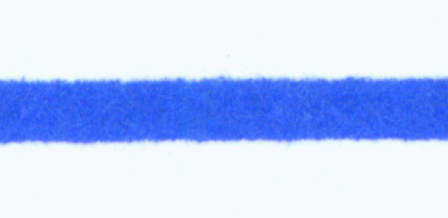
Picture: "Line-colour-bleeding". Licensed under CC BY-SA iii.0 via Wikipedia
Margins
Yous must permit for a margin of at to the lowest degree 0.five″ (13 mm) on all sides. If you don't the file will be rejected. This handy image from Casey Printing shows each line you should consider when making your PDF:
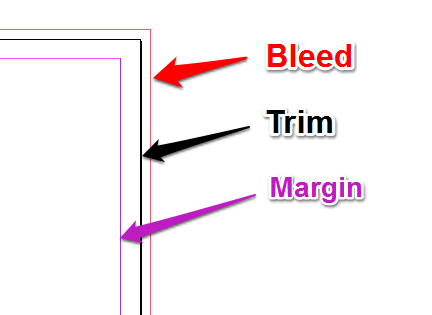
Now that you lot have some thought of what this all ways, yous should be able to effigy out what you need to do with your own certificate with Ingram Spark's chart showing drain size:
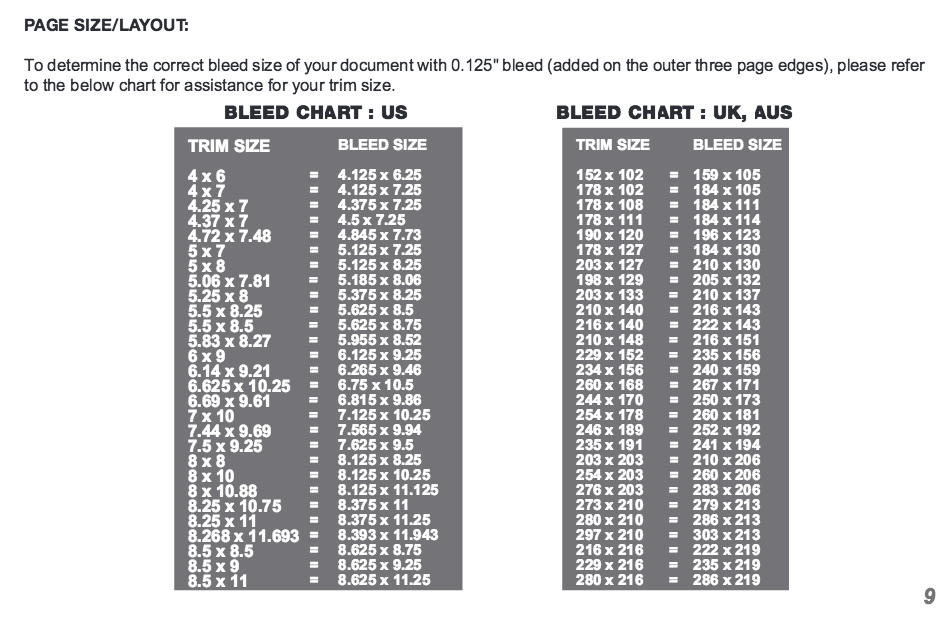
Page 9 of the 2016 Ingram Spark Guide is clearer than the electric current guide
A Free Preflight Profile for Acrobat – Autofix!
Finally, here's a free Ingram Spark Preflight Profile to use with Acrobat 11 – DC (last tested Oct 2020) that uses all the settings to a higher place, that I made myself, and so you lot tin can merely bank check your file in a few clicks. I wish Ingram Spark would make this happen themselves, but I've taken my best shot at covering most of the bases for setting your PDF to get it passed. Disclaimer: You'll need to check information technology over to make certain everything is covered off after you lot use the tool.
You can download information technology here
It warns you lot if anything is incorrect with your PDF for Ingram Spark (except for margins considering they depend on your volume size, then I left that out) and fixes anything that needs fixing, and sets your color and PDF blazon for you automatically.
If you want to test information technology out, download the file and unzip it.
Then get to Edit > Preflight:
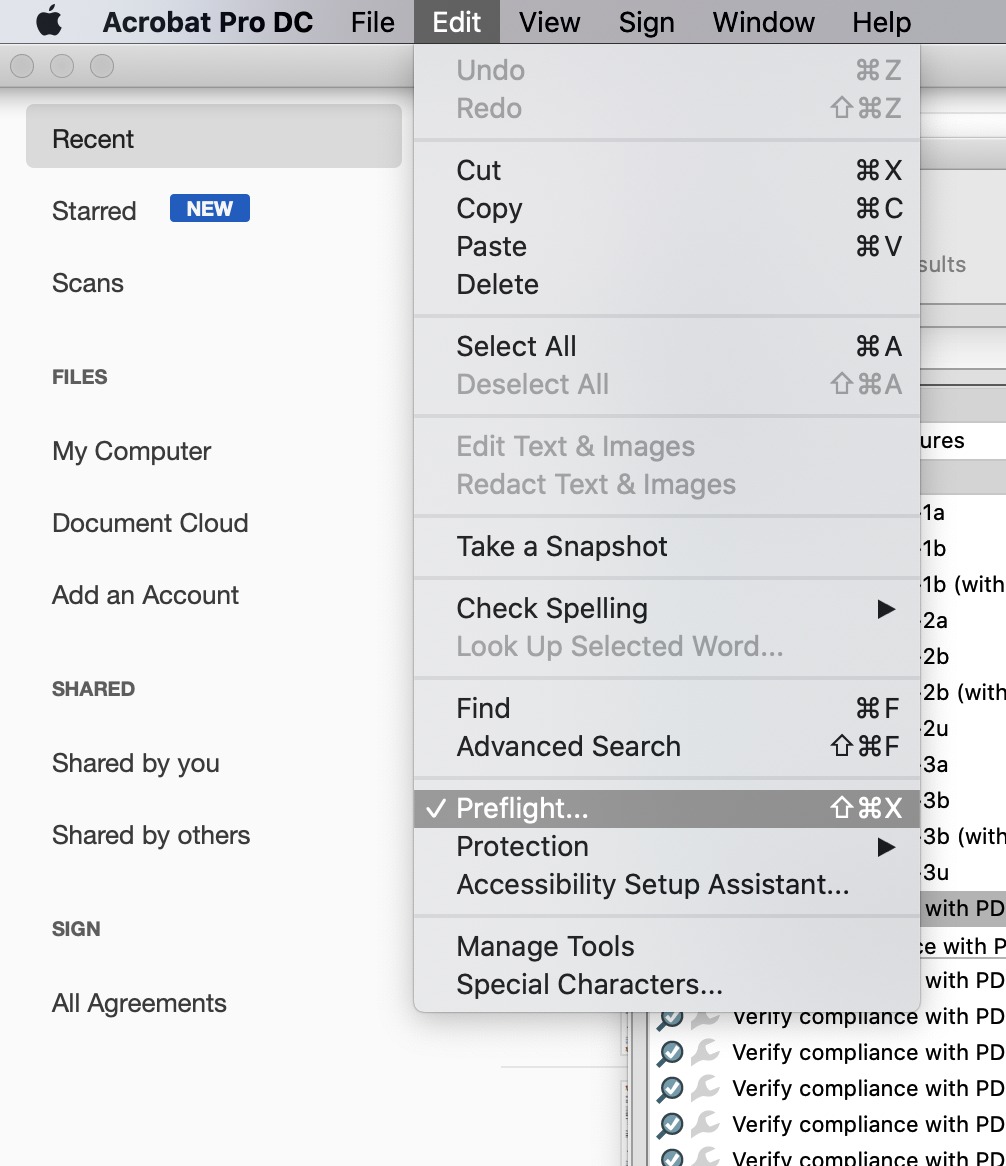
And so you volition exist shown a box like this. Choose INGRAM equally the contour you want to use:
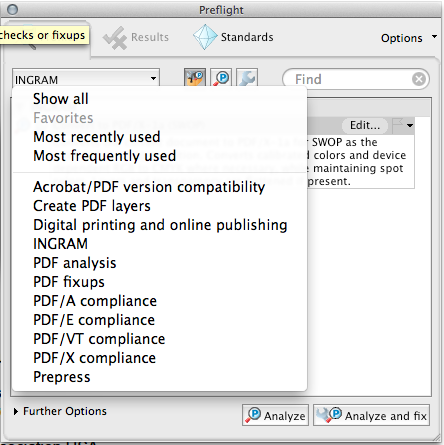
Then click "Clarify and Set." Save the file when prompted. You will exist given a box telling you what has been fixed, or what needs fixing:
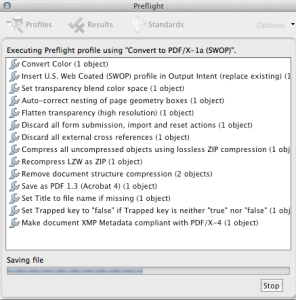
Skilful luck with all!
This article is published with thanks to author Anna Castle.
Get an Editorial Review | Get Amazon Sales & Reviews | Get Edited | Publish Your Volume | Enter the SPR Book Awards | Other Marketing Services
Share This Story!
mackinoltycriniveran.blogspot.com
Source: https://www.selfpublishingreview.com/2016/03/how-to-fix-your-ingram-spark-pdf-with-free-pdf-fix-download/